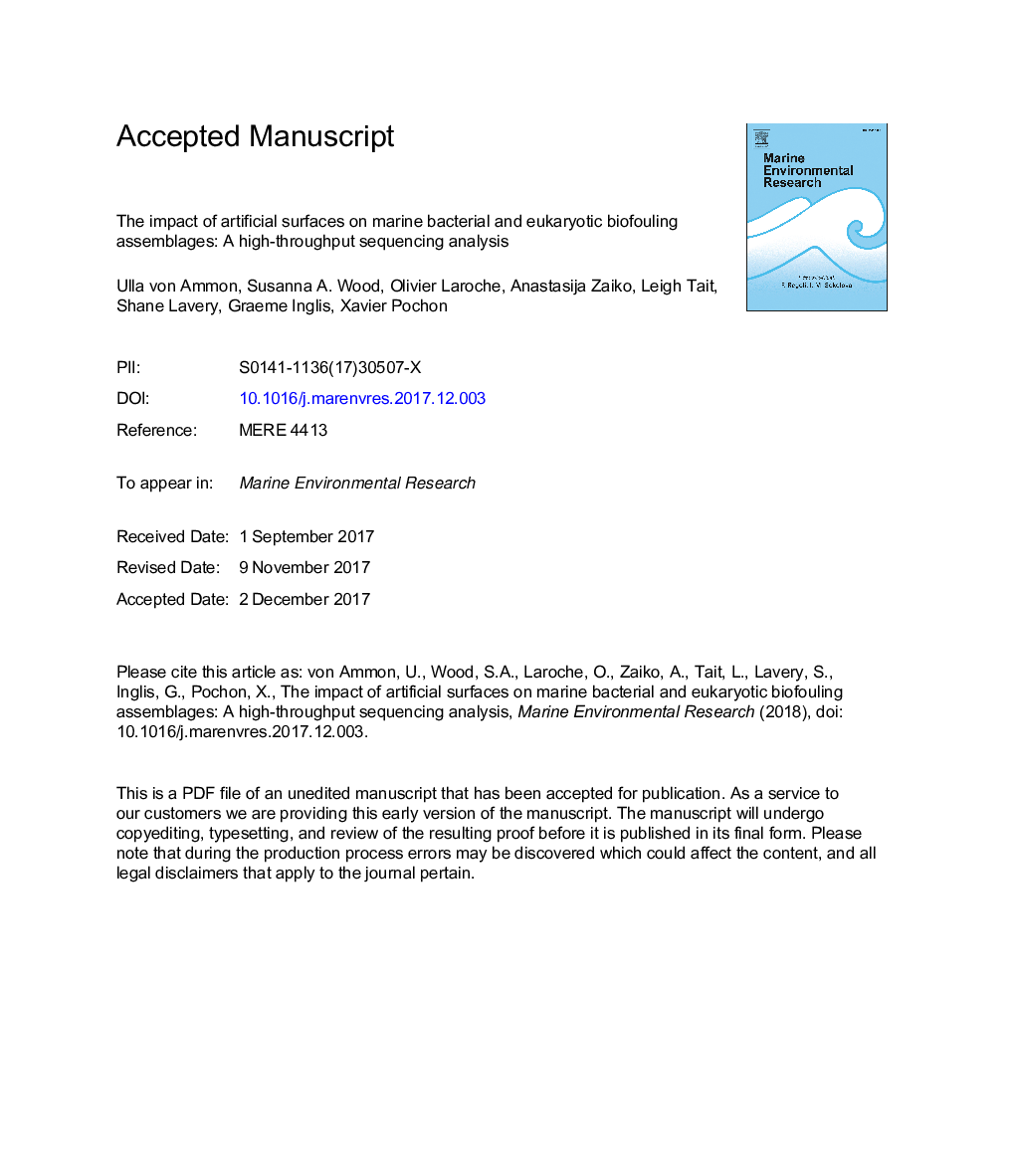| Article ID | Journal | Published Year | Pages | File Type |
|---|---|---|---|---|
| 8886400 | Marine Environmental Research | 2018 | 43 Pages |
Abstract
Vessel hulls and underwater infrastructure can be severely impacted by marine biofouling. Knowledge on which abiotic conditions of artificial structures influence bacterial and eukaryotic community composition is limited. In this study, settlement plates with differing surface texture, orientation and copper-based anti-fouling coatings were deployed in a marina. After three months, biofouling samples were collected and bacterial and eukaryotic communities characterised using DNA metabarcoding. The copper anti-fouling coating treatments incurred the most significant compositional changes (p â¤Â 0.001) within both domains. Bacterial diversity decreased, with Gammaproteobacteria becoming the dominant phylum. In contrast, protist diversity increased as well as opportunist nematodes and bryozoans; urochordates and molluscs became less abundant. Network analyses displayed complex relationships on untreated plates, while revealing a simpler, but disturbed and unstable community composition on the anti-fouling coated plates. These networks of copper treatments displayed opportunist taxa that appeared as key organisms in structuring the bacterial and eukaryotic communities.
Related Topics
Physical Sciences and Engineering
Earth and Planetary Sciences
Oceanography
Authors
Ulla von Ammon, Susanna A. Wood, Olivier Laroche, Anastasija Zaiko, Leigh Tait, Shane Lavery, Graeme Inglis, Xavier Pochon,
